#WarehouseManagementSystems
Explore tagged Tumblr posts
Text
The Intralogistics Expo 2025 is your gateway to cutting-edge innovations in warehousing and logistics. From automation and AI to sustainability and beyond, this event will empower businesses to embrace the future of warehousing excellence.
Looking for expert solutions to transform your supply chain? Companies like Genex Logistics are paving the way for smarter, more efficient operations!🌐
Don’t miss your chance to stay ahead in the ever-evolving world of logistics. Let’s innovate together!
#IntralogisticsExpo2025#WarehousingExcellence#LogisticsInnovation#SupplyChainSolutions#TechnologyInWarehousing#AutomationInWarehousing#SmartWarehousing#FutureOfLogistics#SustainabilityInLogistics#Industry40#DigitalTransformation#AIInLogistics#RoboticsInWarehousing#RealTimeInventory#WarehouseOptimization#LogisticsTrends#SupplyChainAutomation#SmartLogisticsSolutions#WarehouseManagementSystems#SustainableWarehousing#LogisticsNetworking#WarehousingTrends2025#FutureOfIntralogistics#logistics#genexlogistics#supplychain#3pl#india#reverse logistics#warehouse
0 notes
Text
How Logistics Software Development Services Transform Delivery Experience
The fast-paced world of e-commerce and logistics is a battlefield where speed, efficiency, and customer satisfaction reign supreme. Businesses are constantly seeking ways to streamline operations, cut costs, and delight customers with seamless delivery experiences. This is where logistics software development services come in, transforming delivery processes and empowering companies to stay ahead in an increasingly competitive market.
In this post, I’ll explore the game-changing impact of logistics software on delivery systems. Whether you’re an e-commerce entrepreneur, a logistics company owner, or a supply chain manager, you’ll discover practical insights, real-world examples, and actionable advice to optimize your operations.
Understanding Logistics Software Development Services
What is Logistics Software?
Logistics software is a suite of tools designed to streamline the movement of goods from origin to destination. It includes solutions for:
Supply Chain Management: Overseeing the flow of goods, information, and finances.
Warehouse Management: Organizing inventory and ensuring quick dispatch.
Transportation and Delivery Tracking: Ensuring timely, efficient delivery with real-time updates.
How Technology Powers Logistics Software
IoT (Internet of Things): Real-time tracking devices improve visibility throughout the supply chain.
AI and Machine Learning: Enables predictive analytics, optimized routes, and smarter inventory management.
Cloud-Based Platforms: Facilitate scalability, remote access, and integration with e-commerce systems.
Challenges in Traditional Delivery Systems
Before diving into the solutions logistics software provides, let’s understand the common pain points businesses face:
Operational Inefficiencies
Manual processes delay deliveries and increase errors.
Poor route planning inflates costs and delivery times.
2. Lack of Real-Time Visibility
Customers and managers cannot track shipments accurately.
Limited transparency damages trust and satisfaction.
3. High Costs of Delivery Operations
Rising fuel prices and inefficient processes escalate operational costs.
Overhead costs due to poor resource management drain profits.
4. Poor Customer Experience
Missed delivery timelines and lack of flexibility reduce customer loyalty.
5. Scalability Issues
Legacy systems fail to meet growing demand or integrate with modern platforms.
How Logistics Software Solves These Challenges
1. Enhanced Operational Efficiency
Automation: Streamlines workflows, reducing manual intervention and errors.
Smart Route Planning: Optimizes delivery routes to save fuel and time.
2. Improved Customer Experience
Real-Time Tracking: Provides live updates to both businesses and customers, increasing transparency.
Flexible Delivery Options: Same-day, time-slot deliveries, or eco-friendly shipping options enhance satisfaction.
3. Cost Reduction
Fuel Efficiency: Optimized routes cut down fuel consumption.
Resource Management: Automation reduces overhead and improves staff productivity.
Read here: How to Plan Your Logistics Software Development Budget
Transformative Features of Modern Logistics Software
1. Real-Time Tracking and Visibility
GPS-enabled systems provide live updates.
End-to-end transparency reduces lost shipments and enhances customer trust.
2. Advanced Analytics and Reporting
Predictive Analytics: Forecast demand, avoid bottlenecks, and manage inventory.
Dashboards: Offer actionable insights for smarter decision-making.
3. Scalability and Integration
Seamlessly integrates with e-commerce platforms like Shopify or ERP systems.
Adapts to the growing needs of global businesses or small enterprises.
4. Sustainability Features
Eco-friendly delivery options and carbon footprint tracking appeal to environmentally conscious consumers.
Real-World Examples of Logistics Software in Action
Logistics software helps companies make their operations run smoother and faster. For example, a mid-sized online store started using logistics software to manage deliveries. This software helped them reduce delivery times by 30%, which made their customers happier. As a result, the store saw a 20% increase in customer retention, meaning more people kept coming back to shop.
A large logistics company also used logistics software to improve their supply chain. With this software, they could track shipments better across different countries, making it easier to see where products were and when they would arrive. This helped them improve delivery accuracy by 25%. The software made sure products got to customers on time and without issues.
Even smaller businesses can use logistics software to save money and time. For example, a local courier service started using route optimization tools to plan their deliveries. This helped them save 15% on fuel costs because they were able to take the most efficient routes. The software also made their deliveries more reliable, so customers could count on them to deliver on time.
Choosing the Right Logistics Software Development Service
Key Factors to Consider
Customization: Does the software address your unique business needs?
Technology Stack: Does it include AI, IoT, and cloud-based solutions?
Scalability: Can it grow with your business?
Evaluating Providers
Review portfolios and case studies to ensure proven expertise.
Check for robust post-deployment support and maintenance.
Actionable Checklist: Maximizing the Benefits of Logistics Software
Before investing in logistics software, use this checklist to ensure success:
Does the software support real-time tracking and analytics?
Can it integrate with existing systems like e-commerce platforms?
Is it scalable for future business growth?
Does the provider offer customized features tailored to your industry?
Conclusion
Logistics software development services involve creating tools to automate, track, and optimize delivery operations. They enhance efficiency, cut costs, and improve customer satisfaction by leveraging technologies like AI, IoT, and cloud platforms.
Ready to transform your logistics operations? Partner with iQlance, an industry leader in creating tailored logistics solutions that drive success.
Contact iQlance today to explore custom logistics software development services that will revolutionize your delivery experience and give your business the competitive edge it needs in today’s fast-paced market.
#logisticsoftwaredevelopmentservices#logistics#logisticssoftware#iqlance#deliveryexperiencetransformation#logisticsmanagementsoftware#supplychainsoftwaredevelopment#logisticstechnologysolutions#deliveryoptimizationsoftware#realtimelogisticstracking#transportationmanagementsystems#softwarefordeliverybusinesses#logisticsautomationtools#customlogisticssoftware#logisticssoftwaredevelopmentbudget#logisticssoftwarecompany#warehousemanagementsystems#lastmiledeliveryoptimization#freighttrackingtechnology#aiinlogistics#cloudbasedlogisticsplatforms#howlogisticssoftwareimprovesdeliveryefficiency#benefitsofcustomlogisticssoftwareforecommerce#affordablelogisticssoftwaresolutionsforsmallbusinesses#realtimetrackingsoftwarefordeliveryservices#scalablelogisticssoftwareforglobalbusinesses
0 notes
Text
Logistics Reply: AI-powered Assistant LEApedia Wins 'Best Product LogiMAT 2024' Award

LEApedia, an AI-based assistant for warehouse management systems (WMS), recently received the prestigious "Best Product LogiMAT 2024" award in the "Software, Communication & IT" category at LogiMAT 2024. This recognition is a result of LEApedia's exceptional accomplishments in streamlining internal logistics processes, reducing expenses, and boosting productivity. By utilizing a cutting-edge multi-agent AI engine, LEApedia can analyze extensive datasets to uncover patterns and valuable insights. Additionally, it incorporates a state-of-the-art Language Model that can understand and respond to natural language queries and commands, making it more user-friendly and accessible.
One of LEApedia's standout features is its intelligent search functionality, which enables users to quickly access information, ultimately enhancing efficiency and user experience. Moreover, LEApedia can be customized to meet the specific requirements of each customer and seamlessly integrated into existing systems without causing disruptions. This opens up new possibilities for expanding WMS capabilities while warehouse operations are ongoing, empowering users to stay competitive in the ever-changing logistics industry.
Enrico Nebuloni, Executive Partner at Reply, emphasized the significance of technologies like generative AI and machine learning in improving supply chain visibility and facilitating proactive decision-making. The LEApedia AI-powered assistant serves as a testament to Reply's dedication to advancing WMS solutions and assisting customers on their digital transformation journey.
Read More - https://www.techdogs.com/tech-news/business-wire/logistics-reply-ai-powered-assistant-leapedia-wins-best-product-logimat-2024-award
0 notes
Text
‘Crossing the dock’ Rapidly
When you want to minimize handling and storage time, reduce overall inventory holding costs and improve efficiency in the supply chain, cross docking is the saviour. Companies take advantage of cross-docking to consolidate products from multiple suppliers, break down bulk shipments into smaller lots and reorganize items for efficient delivery to retail stores, fulfilment centres, and customers.
Initially, incoming goods are received at the warehouse or distribution centre where they are usually pre-sorted and labelled for their final destination. Upon arrival, the goods are sorted based on their destination and staging areas are designated for each outbound transportation route or customer. Goods are then moved directly from the receiving dock to the outbound dock without being stored in the warehouse.
By bypassing storage and directly transferring goods from inbound to outbound transportation, cross docking accelerates the order fulfilment process, optimize transportation routes / capacity, and reduce transportation costs.
To make the process accurate and seamless, digital logistics platform can be deployed. Here, the orders can be placed manually or automatically through integration with suppliers' systems via application programming interfaces (APIs). The platform manages inventory in real-time, keeping track of the items available for cross-docking. It monitors stock levels and ensures that the necessary items are available for cross-docking as per the incoming orders.
As goods arrive at the cross-docking facility, they are sorted based on their destinations. The platform helps in managing this process efficiently by providing guidance to warehouse staff on where to place items for consolidation. It generates necessary documentation such as packing lists, shipping labels, and manifests for the consolidated shipments. This ensures that each package is properly labelled and documented for easy tracking and tracing throughout the supply chain.
Once the goods are consolidated, the platform optimizes the routing of shipments based on factors such as delivery deadlines, destination proximity, and carrier availability. The platform facilitates the selection of appropriate carriers based on predefined criteria such as cost, service level agreements (SLAs), and carrier performance. It then books the transportation services with the chosen carriers.
Throughout the transportation process, the real-time tracking and visibility of shipments allows stakeholders to monitor the status of their orders and anticipate any delays or issues proactively. Once the shipments reach their destinations, the platform captures delivery confirmations and feedback from recipients.
Finally, the gathered data from various touchpoints helps to identify trends, optimize operations, and make data-driven decisions for continuous improvement.
However, implementing cross docking requires careful coordination and synchronization of inbound and outbound transportation schedules, as well as efficient sorting and staging processes to ensure timely transfer of goods. Additionally, not all products or industries are suitable for cross docking, as certain goods may require storage or additional processing before being shipped to their final destination.
Cross docking can offer significant benefits for perishable goods, such as food items or flowers, by helping to maintain freshness and reduce waste. As they have limited shelf life, so minimizing the time spent in storage is crucial to maintaining freshness. Cross docking allows perishable goods to move quickly through the supply chain, reducing the amount of time they spend in storage facilities where they could spoil or degrade.
By evading traditional warehousing processes, it ensures that fresh products arrive at retailers or customers in a timely manner, maximizing shelf life, and quality. Cross docking facilities can implement rigorous quality control measures to ensure that perishable goods meet quality standards before being shipped to customers. Additionally, with proper tracking and monitoring systems in place, it's easier to trace the movement of perishable goods throughout the supply chain.
Cross docking facility can quickly adjust its operations to prioritize the handling and distribution of that product, helping to prevent shortages and minimize waste, if there is a sudden increase in demand for a particular perishable product.
Multiple handling steps can be avoided, minimizing the risk of damage or contamination, helping to preserve the quality and freshness of perishable goods throughout the supply chain. By reducing the number of handling and storage steps, the process helps minimize energy consumption, greenhouse gas emissions, and environmental impact associated with logistics operations.
It is particularly beneficial in industries with fast-moving consumer goods, perishable products, or time-sensitive shipments. By leveraging cross docking strategies, companies can enhance the efficiency, reliability, and sustainability of their perishable goods supply chains.
0 notes
Text
#inventorysoftwareforwarehouse#WarehouseInventoryManagementSoftware#warehousemanagement#warehousemanagementsystem#warehousestockmanagementsystem
2 notes
·
View notes
Text
Why Invest in a Warehouse Management System Today
Managing a warehouse in today’s fast-moving market isn’t easy. With increasing customer expectations and supply chain complexities, using manual processes or outdated systems is risky.
To stay competitive and profitable, businesses must adopt a robust Warehouse Management System (WMS).

What is a Warehouse Management System?
A Warehouse Management System is a software solution that helps manage and optimize warehouse operations like inventory control, stock tracking, picking, packing, and shipping. It's a powerful tool designed to enhance visibility, accuracy, and productivity in your supply chain.
A good Warehouse System works alongside tools such as shop stock management software, sales inventory software, and software for inventory and sales to offer end-to-end control.
Top Reasons to Invest in an Inventory Management System Today
1. Accurate Inventory Tracking
Manual inventory tracking lead to human errors and mismatches. A Warehouse Management System offers:
Real-time stock visibility
Barcode and RFID integration
Reduced shrinkage and stockouts
Smooth syncing with shop inventory management tools
2. Faster and Reliable Order Fulfillment
Fulfilling customer orders quickly and accurately improves brand loyalty. Stock Management System allows:
Intelligent pick-pack-ship automation
Instant stock updates
Integration with store stock software
Seamless returns management
3. Cost Savings Across the Supply Chain
With automation and analytics, a Warehouse Management System reduces operational overheads:
Fewer manual errors and returns
Optimized labor and space usage
Works with billing and inventory management software for financial accuracy
4. Scalability for Future Growth
As your operations expand, a flexible Inventory Management System supports:
Multi-location warehouses
Cloud access and remote monitoring
Compatibility with shop management software and POS tools
5. Smarter Decisions with Data Insights
An Inventory Management System tracks all warehouse activities and provides key performance indicators:
Real-time dashboards
Inventory turnover reports
Trends to integrate with software for shop inventory systems
Core Features of a Stock Management Software You Should Look For
When choosing a Warehouse Management System, ensure it supports integration with your business software ecosystem:
Shop inventory management software
Software for inventory and sales
Store management software
Billing and inventory management software
Sales inventory software
These features not only enhance functionality but ensure the system grows with your business needs.
Which Businesses Should Use Warehouse Management Software
From small retail shops to large warehouses, anyone handling inventory benefits from Warehouse Management System the Warehouses include:
Retailers using shop stock management software
Grocery stores using shop inventory management tools
E-commerce brands needing software for inventory and sales
Wholesalers tracking bulk stock with store stock software
Why You Shouldn’t Delay
Every day without a proper Warehouse Management System is a missed opportunity to optimize operations. Failing to modernize leads to:
Inventory mismanagement
Higher costs
Delayed orders
Disconnected software systems (like POS and shop inventory management software)
By investing in WMS today, you position your business for:
Faster delivery
Greater accuracy
Long-term growth
Conclusion
In today’s digital-first world, a Warehouse Management System is no longer optional. Whether you run a retail store, eCommerce business, or wholesale unit.
Integrating your warehouse with systems like shop management software, store management software, and billing and inventory management software will drive better results.
#WarehouseManagementSystem#InventoryManagement#ShopInventorySoftware#StoreManagementSoftware#RetailTech#InventorySolutions#BillingAndInventorySoftware#WarehouseAutomation#SalesInventorySoftware#RetailSoftware#SupplyChainSolutions#InventoryTracking#BusinessSoftware#InventoryOptimization#StockManagement
0 notes
Text
Efficient Warehousing Solutions in India – Storage & Logistics Made Simple
Discover reliable warehousing solutions in India with secure storage, inventory management, and logistics support. Optimize your supply chain with smart warehouse services tailored for businesses.
Warehousing solutions in India are rapidly transforming to meet the demands of a growing economy, e-commerce boom, and global supply chain integration. As companies expand their operations across the country, efficient warehousing services play a critical role in ensuring timely delivery, inventory accuracy, and cost-effective logistics.
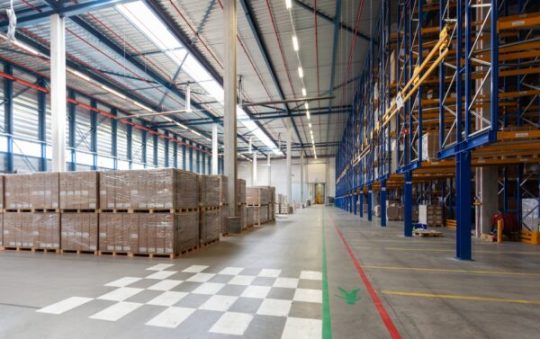
What Are Warehousing Solutions?
Warehousing solutions encompass the storage, management, and handling of goods and materials within a designated facility. These solutions may include basic storage, inventory control, order fulfillment, cross-docking, packaging, and real-time tracking systems. In India, warehousing has evolved from traditional godowns to smart, tech-enabled facilities.
Types of Warehousing Services in India
Public Warehouses: Available for general use by businesses on a rental basis.
Private Warehouses: Owned and operated by large firms for their exclusive use.
Bonded Warehouses: Licensed by the government to store imported goods until customs duties are paid.
Cold Storage Warehouses: Used for perishable goods like food, pharmaceuticals, and dairy products.
Fulfillment Centers: Special warehousing designed for e-commerce order processing and last-mile delivery.
Importance of Warehousing Solutions in India
With rising consumer demand and increasing online shopping trends, Indian businesses are investing in scalable warehousing infrastructure. Major cities like Mumbai, Delhi, Bengaluru, and Kolkata have become key warehousing hubs due to their strategic connectivity and proximity to manufacturing zones and ports.

Efficient warehousing improves:
Inventory Management: Real-time tracking and stock visibility
Order Accuracy: Automated systems to ensure timely and error-free deliveries
Cost Efficiency: Reduced transportation and storage costs
Customer Satisfaction: Faster fulfillment and returns management
Key Features of Modern Warehousing Solutions
Automation & IoT Integration: Technologies like barcode scanning, RFID, and warehouse management systems (WMS) boost accuracy and speed.
Security & Safety: CCTV, fire protection, and secure access ensure goods are stored safely.
Scalable Space: Flexible racking systems and layout designs to accommodate growing inventory.
Value-Added Services: Kitting, labeling, packaging, and reverse logistics.
Choosing the Right Warehousing Partner in India
A reliable warehousing service provider in India should offer:
Strategic locations near ports, highways, or industrial corridors
Technology-enabled systems for seamless operations
Trained staff and efficient handling practices
End-to-end logistics integration including transportation and last-mile delivery
Leading logistics providers in India offer customized warehousing solutions tailored to industry needs—whether it’s for FMCG, electronics, pharmaceuticals, or apparel.
Future of Warehousing in India
The Indian warehousing industry is expected to grow significantly, supported by government initiatives like the National Logistics Policy, Gati Shakti Plan, and expansion of logistics parks. Smart warehousing, green buildings, and AI-driven inventory systems are set to redefine the future of storage and distribution.
#WarehousingSolutions#WarehouseIndia#LogisticsIndia#StorageSolutions#InventoryManagement#SupplyChainIndia#WarehouseServices#3PLIndia#ColdStorageIndia#LogisticsSupport#B2BLogistics#IndustrialStorage#SmartWarehousing#FulfillmentCenterIndia#EcommerceLogistics#WarehouseManagementSystem#WarehouseInfrastructure#IndiaLogisticsNetwork#StorageFacilityIndia#WarehousingExperts
0 notes
Text
How Transport Management System Revolutionizes Delivery Accuracy and Customer Experience in the Middle East
The logistics landscape of the Middle East is as vibrant as the region’s fast-emerging economies. The Middle East has busy downtown areas like Dubai and Riyadh, as well as large rural spaces. This region presents unique challenges and opportunities for companies that want to deliver efficiently and accurately. In an age where speed and transparency expectations from the customer are taking off, a solid Transport Management System (TMS) is no longer an indulgence but a basic requirement for enhancing delivery precision and taking the customer experience to new heights.
The TMS Solution: Transforming Delivery Operation
A transport management system offers the cyber infrastructure to overcome these difficulties and to greatly enhance delivery precision. Here’s why:
Smart Route Optimization: Finding the shortest path is common in old systems. A modern transport management system uses real-time traffic data. It also looks at past delivery trends and driver availability. This helps create the best routes. They have unspecific addresses with advanced geocoding, so drivers can easily get to the destination. Dynamic rerouting helps the system deal with unexpected delays, like traffic or accidents. It guides drivers to a new route while keeping the delivery schedule on track.
Real-Time Visibility and Tracking: This is probably the most critical capability of delivery accuracy. A TMS offers end-to-end visibility by shipment. Dispatchers are provided with real-time location of the vehicle, driver, and delivery status on a computerized dashboard. Such preemptive monitoring enables intervention at one go in the event of deviation or delay, averting trouble ahead.
Automated Load Planning and Dispatch: Planning manually takes too much time and is human error. With a TMS, trip planning is done automatically with intelligent clustering of deliveries by destination, weight, and volume. It makes the best use of vehicles, cuts down on empty miles, and improves delivery grouping. This leads to more deliveries per shift and fewer missed attempts.
Digital Proof of Delivery (POD): Skipping paper POD, a Transport Management System allows drivers to digitally sign, capture images, and even describe failed deliveries using handheld devices. This gives immediate, precise proof of delivery, lowers contention, and simplifies billing.
Accurate deliveries are the foundation of an exceptional customer experience—crucial in today’s competitive business environment.
Proactive Communication: With real-time visibility, a Transport Management System can push automated email or SMS notifications to customers at each point of the delivery experience—from dispatch through “driver on the way” and successful delivery. This transparency gives assurance and allays fears, reducing incoming customer service calls.
Accurate ETAs: With real-time information and predictive analysis, a transport management system provides very accurate estimated times of arrival (ETAs). Customers prefer to be able to know exactly when their package will arrive so that they can better plan their day.
Self-Service Tracking: Branded customer portals allow the receiver to track their shipments themselves, eliminating the need for customer service calls for status.
Fewer Missed Deliveries: By streamlining routes and providing real-time driving directions, a TMS minimizes missed delivery attempts by removing the frustration of packages that never arrive and the hassle of rescheduling redelivery appointments.
Flexible Delivery Choices: Some advanced TMS software programs are even capable of offering customers the option of rescheduling or rerouting to a different pick-up site, providing greater convenience and control.
Middle East-Wide Benefits of TMS
How Transport Management System is adding value to Middle East Logistics
Cost Savings: The optimized routes result in lower fuel consumption. Increased efficiency provides the ability to make more deliveries using an equivalent number of vehicles, potentially minimizing the need for fleet growth. Fewer errors and conflicts also translate into fewer operating costs.
Scalability: As Middle East e-commerce continues to grow at an ever-faster rate, a cloud-based TMS can only be scaled to accommodate higher volumes of orders without incurring significant infrastructure expense.
Greater Compliance: A TMS is able to manage border problems and customs documentation and offer home regulation conformity.
Data-Driven Insights: The platform collects massive amounts of data about delivery performance, driver behavior, and route optimization. It uses this data to identify bottlenecks, improve processes even more, and make data-driven business decisions.
Conclusion
In the Middle East, the logistics industry is changing quickly. It is now important to invest in a good transport management system. This investment is essential for success. With the promise of real-time location, intelligent route optimization, and automated processes, a transport management system empowers businesses with the potential to overcome geographical challenges, significantly improve the accuracy of deliveries, and, most importantly, deliver a better customer experience. Its implementation is the window to achieving efficiency, profitability, and sustainable growth in the region’s ever-changing marketplace. https://www.instagram.com/quickmovetechnologies/
#transportmanagementsystem#freightforwarding#freight#quickmovetechnologies#warehousemanagementsystem
0 notes
Text
efficient warehouse management in the food industry a quick guide

A Warehouse Management System optimizes food industry operations by ensuring real-time inventory tracking, reducing waste, and enhancing supply chain efficiency. This guide explores key features like automated stock management, temperature monitoring, and compliance tracking. Learn how to implement a robust system to streamline warehouse processes and maintain product quality in the food industry.
#inventorymanagementsoftware#softwaredevelopment#warehouseinventorymanagementsoftware#warehousemanagement#warehousemanagementsoftware#warehousemanagementsystem
0 notes
Text
Further developed activity management occurs through inventory tracking systems joined with supply chain technology
Business proficiency requires productive inventory management to keep a consistent supply chain activity in the ongoing fast business climate. Perfect supply chain execution by means of cutting-edge tracking systems empowers organizations to make proficiency while lessening functional consumptions and fortifying consumer loyalty.
The Job of Inventory Tracking Systems
A very planned inventory tracking system empowers business administrators to see their ongoing stock status alongside following thing developments in addition to overseeing their reordering systems. High-level systems utilize blend programming components of RFID close by scanner tag examining and cloud technology to concede constant inventory tracking along these lines lessening mistakes while disposing of both stockouts and overloading circumstances. A tracking system execution empowers organizations to run their warehousing tasks all the more productively and decline misfortunes from both robbery and ill-advised management.
Headways in Supply Chain Technology
The ongoing Supply Chain Technology joins man-made reasoning with Web of Things sensors and enormous information assessment capacities to further develop business expectations as well as decisions. Organizations that use prescient examination can anticipate future interest designs which helps them close by IoT-empowered sensors that track their resources successfully. Authoritative associations execute blockchain technology all the more profoundly to accomplish better supply chain straightforwardness along with security for exchanges. Advancements achieve bound together tasks between providers who work close by warehouses and merchants.
Warehouse Management for Greatest Productivity
The warehouse management system (WMS) upgrades activities by improving how items get put away and handled toward conveyance along with strategies capabilities. Having this system empowers organizations to deal with their space better while it likewise allows them to execute robotized inventory management and settle on better conveyance choices. Warehouses get better accuracy and dexterity through supply chain and inventory tracking technology combination which guarantees both proficient conveyance management and reasonable inventory control.
Conclusion:
The mix of inventory tracking system with supply chain technology along with warehouse management empowers business activities which become more proficient with precise outcomes and extended capacities. Organizations hoping to give upper hands through current strategies difficulties ought to choose these arrangements which will set up their tasks for progress.
For original post visit: https://thepoliticus.com/further-developed-activity-management-occurs-through-inventory-tracking-systems-joined-with-supply-chain-technology/
0 notes
Text

Features of WMS Solutions :
Inventory Management and Analysis 📊 Order and Fulfillment Management 🛒 Labor Management 💼 Tracking and Forecasting 📍🔮 Transportation Management 🚚
Learn More at www.omexcsms.com
#WarehouseManagementSystem 📦#InventoryManagement 📊#OrderFulfillment 🛒#LaborManagement 💼#TrackingAndForecasting 📍🔮#TransportationManagement 🚚#LogisticsSolutions 🛠️#SupplyChainOptimization 🔗#WarehouseEfficiency 🏭#SmartLogistics 🚛#WarehouseAutomation 🤖#EcommerceLogistics 🌐#BusinessEfficiency 📈
1 note
·
View note
Text
How to Choose the Right Warehouse for Your Business Needs
Selecting the right warehouse is crucial for the success of any business, whether you’re dealing with physical goods or handling high-demand e-commerce orders. The right warehouse can streamline your operations, improve inventory management, and enhance your overall customer satisfaction. On the other hand, choosing the wrong warehouse can lead to unnecessary expenses, delays, and inefficiencies.
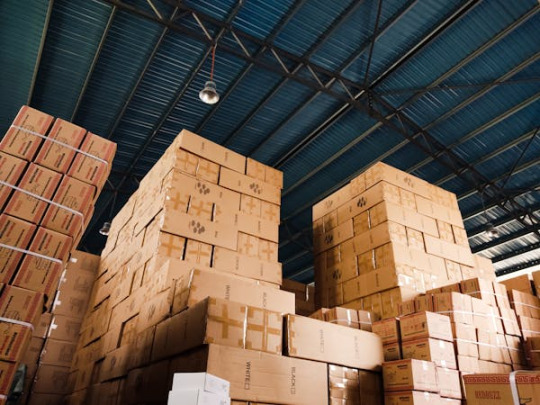
In this article, we’ll explore the essential factors you need to consider when selecting a warehouse that aligns with your business needs.
1. Location, Location, Location
The location of your warehouse can have a significant impact on your overall business operations, including shipping times, costs, and efficiency. A well-located warehouse reduces shipping times to your customers and allows for more cost-effective transportation.
When evaluating the location, consider factors such as:
Proximity to customers: A warehouse located closer to your customer base can result in faster delivery and lower shipping costs.
Transportation links: Ensure that the warehouse is easily accessible by road, rail, or air for quicker and more reliable shipments. A warehouse near major highways or shipping hubs can cut transportation costs.
Access to labor: Depending on the region, availability of skilled labor can be a critical factor, especially if you require specialized tasks like picking, packing, or quality control.
If you're looking for a centralized warehouse that can cater to multiple regions, choosing a location with good connectivity will be crucial for ensuring smooth operations.
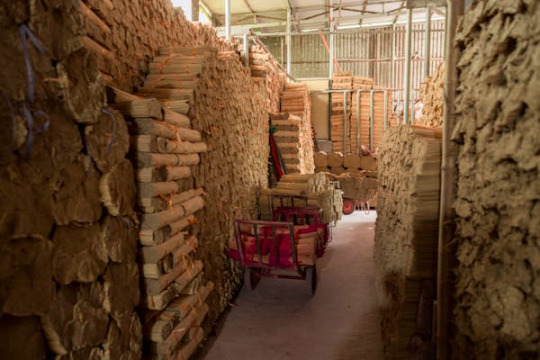
2. Warehouse Size and Layout
The size and layout of your warehouse should match your storage needs. Businesses that deal with a wide variety of products, or have unpredictable inventory levels, may need more space, while others with smaller or more standardized products may require less.
Consider the following:
Available storage space: Ensure that the warehouse offers enough space to accommodate your current and future inventory needs.
Flexible storage options: Look for a warehouse that can offer scalable storage solutions to accommodate seasonal fluctuations or sudden spikes in demand. Many modern warehouses offer on-demand storage, allowing businesses to scale their space up or down depending on needs.
Efficient layout: A well-organized warehouse layout helps streamline operations and reduce inefficiencies. This includes areas for inventory reception, storage, picking, packing, and shipping. A customized layout tailored to your workflow can improve speed and accuracy.
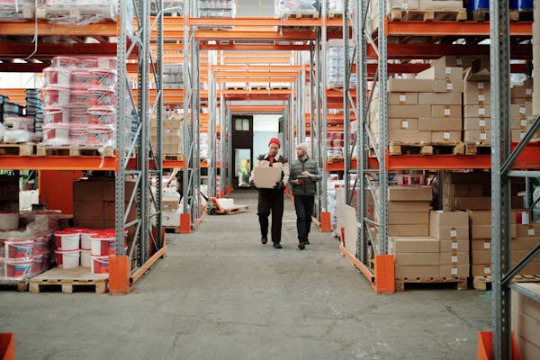
3. Technology and Inventory Management Systems
In today’s fast-paced business world, having the right technology can make or break warehouse operations. A warehouse that uses advanced inventory management systems allows you to track your products in real-time, automate processes, and maintain accurate stock levels.
When evaluating a warehouse’s technology, consider the following:
Warehouse Management System (WMS): Does the warehouse use an effective WMS? This system helps track inventory, manage orders, and optimize the storage process.
Real-time updates: Ensure that the warehouse can provide real-time data on stock levels and order fulfillment status. This helps you stay informed and make smarter business decisions.
Automation and Robotics: Some modern warehouses use automation tools like robots for picking and sorting inventory. These technologies can improve efficiency and reduce human error.
If a warehouse offers advanced technology, you’ll be able to improve your order fulfillment times and better manage your inventory, leading to higher customer satisfaction.
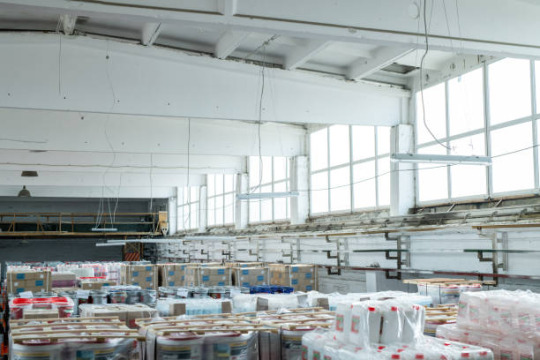
4. Security and Safety
The security of your products is paramount, especially if you’re storing high-value or sensitive items. When choosing a warehouse, make sure that it has robust security measures in place to protect your inventory from theft, damage, or loss.
Look for:
Surveillance systems: Ensure that the warehouse has comprehensive CCTV coverage and alarm systems in place.
Controlled access: Make sure that only authorized personnel have access to your storage areas. This may include security guards, access badges, or biometric authentication.
Safety protocols: Check if the warehouse adheres to safety guidelines and regulations, including fire safety, proper handling of hazardous materials, and general warehouse safety protocols.
Having a secure warehouse will protect your inventory and provide peace of mind as your business grows.
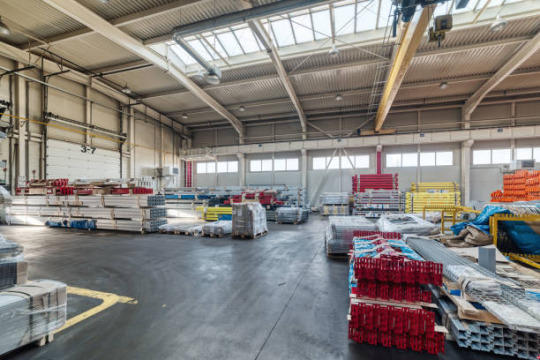
5. Cost and Flexibility
Warehousing costs can vary greatly depending on location, services, and space requirements. As a small or growing business, it’s essential to find a warehouse that fits within your budget while still providing the services and flexibility you need.
Understand pricing models: Make sure you fully understand the cost structure of the warehouse. Are you paying for a fixed amount of space, or is the cost based on how much you actually use? Many warehouses now offer on-demand warehousing solutions, allowing businesses to pay only for the space and services they need.
Hidden fees: Be aware of additional fees, such as shipping costs, handling charges, and extra services. Always factor these into your cost calculations.
Flexible contracts: A good warehouse provider should offer flexible contract terms that allow you to scale up or down depending on your business growth.
Choosing a warehouse that offers both competitive pricing and flexibility can help keep your operational costs in check.
Choosing the right warehouse is more than just about finding a place to store your goods. It’s about improving your operational efficiency, cutting costs, and supporting your overall business strategy. By carefully considering factors like location, size, technology, security, and cost, you can make an informed decision that aligns with your business goals.
When looking for cost-effective warehousing solutions or flexible storage options, make sure to choose a warehouse that fits both your current needs and future growth.
#WarehouseSelection#WarehousingSolutions#BusinessLogistics#InventoryManagement#WarehouseLocation#StorageSolutions#OperationalEfficiency#WarehouseTechnology#InventoryTracking#FlexibleStorage#WarehouseManagementSystem#SecureWarehousing#BusinessGrowth#CostEffectiveWarehousing#SupplyChainOptimization#CustomerSatisfaction#RealTimeInventory#WarehouseSafety#ScalableStorage#OrderFulfillment
0 notes
Text

Are defects and #OrderFulfillment issues holding back your #MedicalDeviceManufacturing business?
Medical devices are made from hundreds of critical components and materials. Defects in any component or process can have profound health implications and affect the company's performance.
In addition, fulfilling high-volume orders, which involves tracking the exact location, quantity, and type of finished product in a warehouse, is often marred by manual errors and fatigue. These issues can lead to a loss of sales and dissatisfied customers.
An exhaustive #Traceability and #WarehouseManagement System (#WMS) is needed, which allows us to track everything from Raw Materials to Finished Goods, including vendor-level details.
For a comprehensive traceability solution for your unit: https://zurl.co/eWv8
0 notes
Text
Lean Manufacturing: Trim Waste, Boost Efficiency
Lean manufacturing is a production philosophy and management approach originated from the Toyota Production System (TPS) created by Taiichi Ohno. The primary goal of lean manufacturing is to eliminate waste and optimize efficiency throughout the entire production process. The term “lean” refers to the idea of minimizing waste while maximizing value for the customer.
Principles of Lean Manufacturing:
Value: Recognize the aspects of the product or service that hold significance for the customer.
Value Stream Mapping: Map the entire value stream for a product or service. Identify every step involved, from raw materials to the customer.
Flow: Ensure a smooth and continuous flow of work through the entire process. Minimize batch sizes and work in progress to prevent bottlenecks.
Pull: Use a pull system to produce only what the customer demands. Avoid overproduction and excess inventory.
Perfection: Continuously strive for perfection by eliminating waste and improving processes.
Kaizen (Continuous Improvement): Implement small, incremental improvements on an ongoing basis.
Just-in-Time (JIT): The strategy of producing and delivering products precisely when they are needed to meet customer demand. Minimize inventory and storage costs.
5S: Sort (Seiri), set in order (Seiton), shine (Seiso), standardize (Seiketsu), and sustain (Shitsuke). A systematic approach to workplace organization for efficiency and continuous improvement.
Single-Piece Flow: Aim for a production system where one product moves through each step of the process at a time. Reduce waiting time and defects.
Standardized Work: Establish standard processes and work instructions. Ensure consistency and identify deviations for improvement.
Visual Management: Use visual aids such as charts, graphs, and signs to communicate information clearly. Facilitates understanding and quick decision-making.
Jidoka (Autonomation): Incorporate automation with a human touch, allowing machines to stop when a defect is detected. Empower workers to stop the production process if they identify a problem.
Benefits of Lean Manufacturing:
Cost Reduction: Eliminating waste leads to cost savings in terms of materials, labour, and time.
Improved Quality: By focusing on value and eliminating defects, the overall quality of products or services is enhanced.
Increased Efficiency: Streamlining processes and reducing waste result in more efficient production.
Shorter Lead Times: The term often leads to faster production cycles, reducing the time it takes to get products to customers.
Flexibility and Responsiveness: Lean systems are more adaptable to changes in customer demand and market conditions.
Space Utilization: Lean principles often lead to a more efficient use of space in production facilities
Why Lean Manufacturing Should Be Adopted?
Competitive Advantage: Lean practices enable companies to respond quickly to customer demands, giving them a competitive edge.
Customer Satisfaction: By delivering high-quality products efficiently, the process helps enhance customer satisfaction.
Resource Optimization: It minimizes waste, making more effective use of resources.
Adaptability to Change: In a rapidly changing business environment, lean manufacturing allows companies to adapt more easily to market fluctuations and evolving customer preferences.
Long-Term Sustainability: The principles of lean manufacturing support long-term sustainability by promoting efficiency and reducing environmental impact.
However, adopting lean manufacturing principles can lead to improved efficiency, reduced costs, increased quality, and a more responsive and adaptable production system, ultimately providing a competitive advantage in the marketplace
0 notes
Text
Discover how iProgrammer revolutionized warehouse management using AI and machine learning. Read the blog for insights, and download the full case study to learn about our tailored solutions for overcoming challenges like Real-Time Inventory Management, Theft Detection and Prevention, Enhanced Safety Monitoring.
#warehousemanagementsystem#wmssystems#warehousemanagement#bestwmssystems#bestwms#cloudbasedwms#cloudbasedwarehousemanagementsystem#cloudwms#warehousemanagementsolution
0 notes